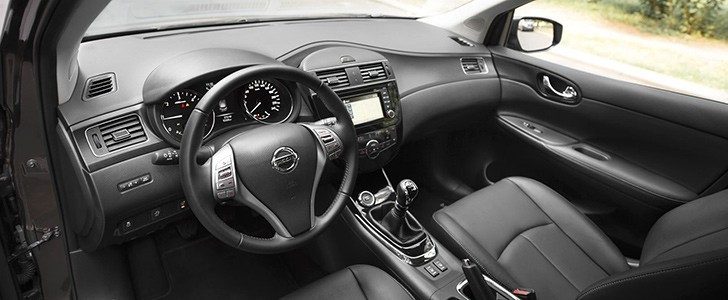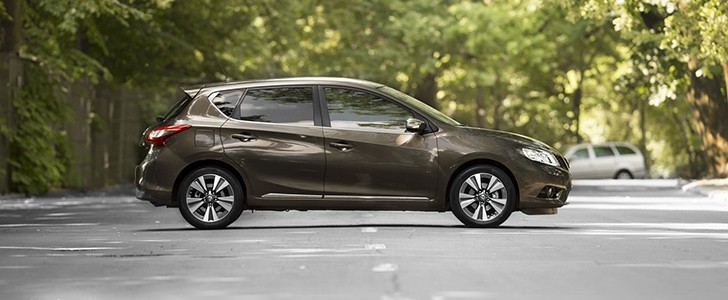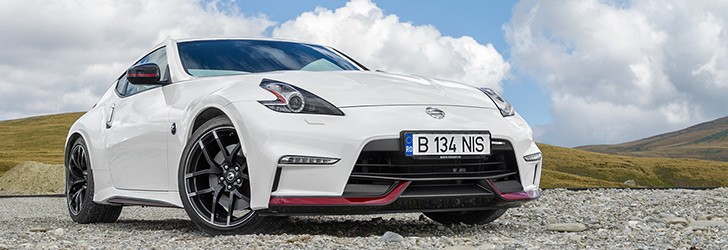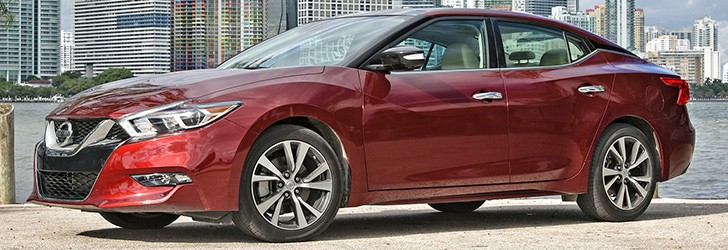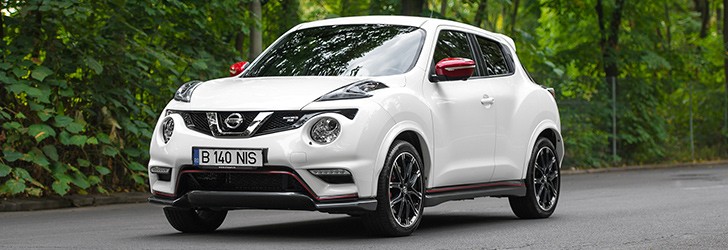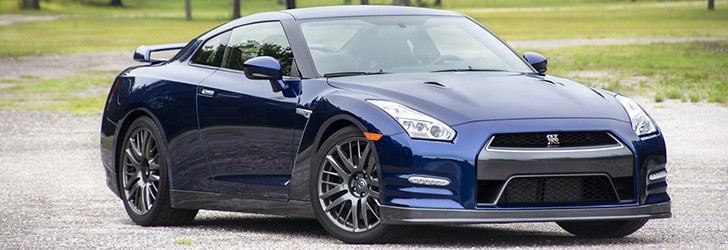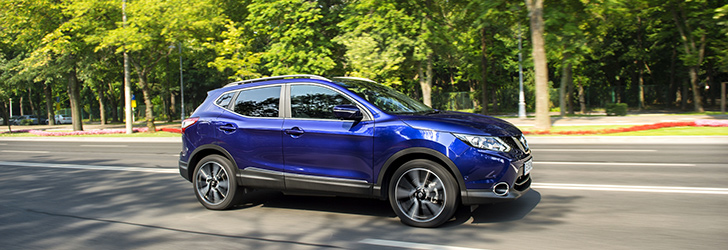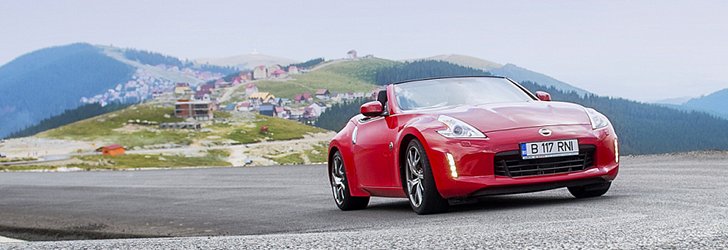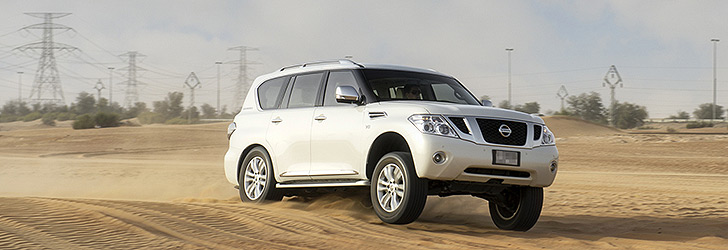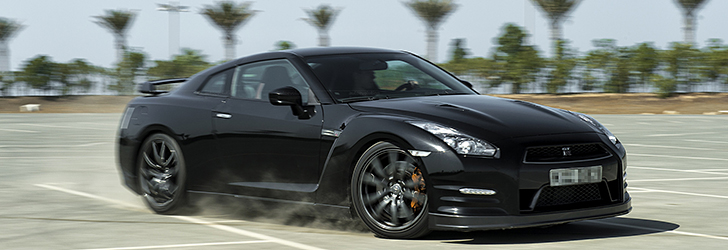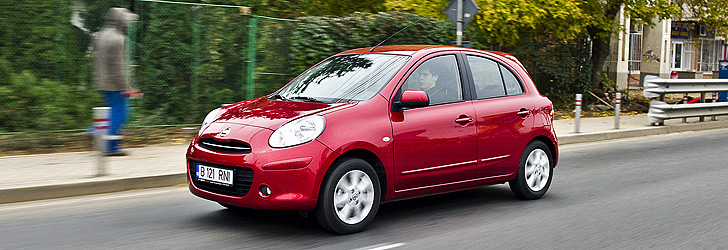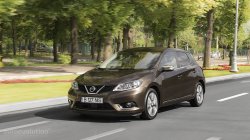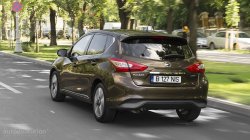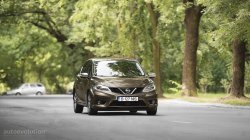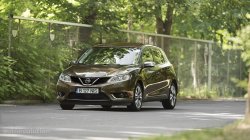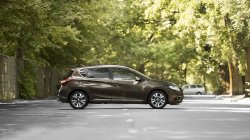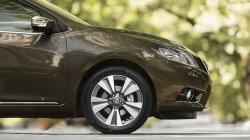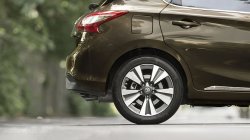2015 Nissan Pulsar Review
OUR TEST CAR: 2015 Nissan Pulsar 1.5 dCi Diesel 110 HP 6-Speed Manual
For all you European readers, the name Pulsar might seem new in Nissan’s stable, but in fact it’s been there since 1978 when most Nissans were called Datsuns. On the Old Continent, you might have met with the car's predecessors wearing the Sunny nameplate in the ‘90s or the Almera in the early noughties. However, for 2015, the Japanese automaker decided to re-enter the highly competitive compact hatchback segment, dig up the past and name its new creation the Pulsar.
So, does this Pulsar rotate and emit a beam of electromagnetic radiation like the neutron stars wearing the same name do? Definitely not, but does it at least raise your pulse? No, the name just sounds cool and has nothing to do with the vehicle’s character. When Nissan decided to bring it back, it wanted to create a comfortable family car aimed towards people that consider crossovers a burden to live with in the city.
It might not seem too impressive at first sight, but what the automaker did with the Pulsar was to push the wheels towards the front and back as far as possible, thus creating a C-segment car that rules over the rest when it comes to interior space; comparable to the slow-moving D-segment. What you’re looking at here is basically a slightly shrunken Nissan Qashqai riding on a lower suspension, with an increased wheelbase and only using front-wheel drive.
Design-wise, it won’t set new trends, but if you start looking at it from all angles, you get to see it looks less boring than the Golf, which is usually used as a benchmark in this class. It still lacks the appeal a Mazda3 or a Peugeot 308 offer, but for someone who hates straight lines it will do just fine.
Inspired by the Qashqai, the Pulsar is defined by a little frowny face, with L-shaped LED strips integrated into the headlights, a bulged V hood, sweeping lines across the wheel arches flowing deep towards the boomerang-shaped taillamps and some clean muscular creases along the sides, creating an overall impression of a firmly planted car that will confidently take you wherever you’ll need.
There’s even a sporty-looking carbon fiber-imitating rear apron that masks the exhaust and creates a nice flowing shape. I found it quite interesting, offering a nice touch to the car’s rear end, but there might be some that consider this a bit on the kitsch side.
Worry not though, because that’s about the only carbon fiber-imitating trim piece you’ll encounter on the Pulsar. The interior is free of such things but you’ll still get to see another sin of the auto industry here: wood-imitating plastic. And I’m not even talking about one of the colored ones. Here you find a black concave plastic trim running along the whole dashboard trying to mimic a weirdly carved ebony.
Other than that, your eyes will be stimulated by the nice flowing shapes of the dashboard with its floating central console covered in gloss black, continued with a strong transmission tunnel console that offers enough room for your phone, two cup holders and some other accessories that can fit the armrest storage.
All the dark colors chosen to decorate the interior will give you a sober, almost cheap feeling, but coming in contact with the controls of the car will reveal quite the opposite.
Yes, all the large panels inside the cockpit are made out of cheap plastic, like the upper and lower dashboard parts, the sun shade over the instrument cluster, parts of the door cards and most of the lower center console. While all these will give you a sense of cheapness, most of the buttons and switches you touch feel precise and of a greater quality.
It’s a strange feeling, but you quickly get accustomed with. Once you’re in the driver’s seat, you’ll notice everything is within reach, and it feels quite comfortable. The seat is height adjustable even in standard trim and so is the height/depth adjustable steering wheel, cruise control, electric powered side mirrors, Bluetooth connectivity, all-round electric windows, steering wheel shortcut buttons, 5-inch multi-information display and a 4-speaker radio CD/MP3 with USB and AUX connectivity.
The mid trim level adds an engine start button, leather-wrapped steering wheel and shifter, a rear armrest with two cupholders, Forward Emergency Braking, automatic headlights, self-dimming interior mirror and heated exterior ones as well as rain sensing wipers.
Our tester was the fully equipped version which also came with the 5.8-inch 6-speaker NissanConnect Touch-Screen Navigation and Entertainment System, rear camera and 360-degree view, dual-zone climate control, rear privacy glass, LED headlights, Nissan Safety Shield and leatherette upholstery.
Having sorted out the gear, let's jump in the hot seat and give the Pulsar a spin, or, better said, a relaxed casual drive because that’s what the car invites you to do. In most countries it comes with two engine choices. The first is a 1.2-liter turbocharged petrol engine making 115 hp / 165 Nm (122 lb-ft) mated to either a 6-speed manual or a CVT. As for the second, this is a 1.5 turbocharged diesel unit pushing 110 hp / 260 Nm (192 lb-ft) that can be had only with the manual box.
Whichever setup you choose, one thing is certain - neither will invite you to accelerate like a maniac and push the car around the corners, a fact also stated by Nissan in one of their press releases. The car was specifically designed with comfort, practicality and convenience in mind so expect to find staying comfy and driving for long hours better than jamming your knees into the sides of the footwell before aiming for the apex.
Your only chance to do that is to get the 1.6-liter turbocharged gasoline engine available on select markets that provides 190 hp and 240 Nm (177 lb-ft). Otherwise, forget about it. Maybe the Nismo version will be able to satisfy your fast driving demands, but that’s another story for another time.
We tested the 1.5 diesel and frankly, this is the setup to go with thanks to the extra torque and fuel efficiency. With all the added gear, the Pulsar weighs 1,307 kg (2,881 lbs), so it kind of needs the extra oomph to make it feel right. And you’ll definitely miss that torque when trying to overtake something on country lanes.
Don’t get too excited though, as with any other diesel engine, the thrust will kick in at a predictable 1,700 rpm and magically disappear after 2,500 rpm, forcing you to shift gears a lot if you want to stay in the power band. The manual version will display an upshift indicator on the multi-information screen each time you have to change gear to keep the rpm needle in the low-fuel-consumption zone.
Around the city, this translates into quickly accelerating to 50 km/h (31 mph) or 60 km/h (37 mph) by shifting just under 2,000 rpm and maintaining that speed while rolling in 4th gear. There’s even a greenness indicator to play with and achieve high scores each day so driving around town won’t get boring that easy.
On the other side, the car feels solid and absorbs most of the road irregularities at ease. Deeper potholes and speed bumps will, however, shake you, but that’s almost normal for a car in its class.
The comfort level is greatly improved by the sound insulation, which manages to stop most city noises from perturbing your drive. I remember sitting at a stop light, and a huge cement truck pulled right next to my open driver side window, hurling and hissing like Satan’s commuter wagon. However, simply raising the window reduced all those decibels by about two-thirds.
And speaking of sounds, the 6-speaker audio system you get on the top trim level is very comparable to what you get in the Pulsar's German competitors. It comes with a comprehensive options menu that lets you fiddle with all the parameters, the bass is strong and it won’t sound distorted until you crank up the volume to “douche level” and hang your arm out of the car.
Going shopping will be a piece of cake, thanks to the Pulsar’s boot offering a class-leading 385 liters (13.6 cubic feet). That’s just over what the Volkswagen Golf offers and well over what the Ford Focus has. Sadly, the volume is a bit harder to access due to a rather high loading lip and no false floor to level things up, an accessory also needed when you’ll lower the rear seats to haul something bigger. Maybe they'll add that with the facelift.
Parking in tight spaces won’t be a problem since the top-spec model comes equipped with four tiny cameras. Not only you’ll get a wide view of what’s going on behind your rear bumper but also see a 360-degree top view of the car to better know your surroundings. As a bonus, hit the camera button once more and you get a right side view of the car alone to get a better look at the curb and prevent any rim scratches.
Maneuvering the Pulsar is as easy as it can get. The electrically aided steering is light as a feather at very low speeds and center position to wheel lock lies at only a turn and a half on each side. Perfect for quickly getting in and out of a parking space, an operation also facilitated by the easy to manage clutch and large side mirrors.
Get out of the urban jungle onto the open road and the nimble Pulsar turns into a decent cruiser thanks to all that passenger space, good seat padding and sound proofing. Two or three hours in the driver seat will pass pretty quick, and you won’t need a chiropractor once arriving at the destination.
The rear doors open wide to allow easy access and two passengers will be spoiled with leg and headroom. A third passenger can also be squeezed in between, but I wouldn’t like sitting there for more than an hour. Each door can hold a 1-liter water bottle and a pack of biscuits while the central armrest will easily take in two cans of soda.
Speaking of armrests, those up front aren’t just two hard slabs wide enough to contain two buttons. They can fully support your forearm, feel spongy and even the adjacent panel on the door card is made out of a soft-touch material, which is another plus in my book since I really like my arms to get some good support on long highway trips.
As with most Japanese cars, safety is not an issue in the Pulsar: six airbags, ABS, EBD, ESP, ISOFIX and tyre pressure monitoring system are coming by default along with a feature Nissan calls the Active Trace Control. This basically applies the brakes individually on each wheel to keep you on track in a corner you entered more enthusiastic for the grip provided. And you’ll most probably need this feature because the steering offers no information on what those front wheels are doing.
The next trim level adds the Forward Emergency Braking system which alerts the driver if the gap between his car and the one up front starts to shrink considerably and will even partially apply the brakes if no actions are taken. The top spec comes with Blind Spot Warning, Moving Object Detection, and Lane Departure Warning to further decrease chances of accidentally hitting something or someone in traffic.
And so, we’re only left with the numbers part. Starting with the fuel consumption, Nissan says the 1.5-liter diesel Pulsar will do 7.7 l/100 km (30.5 mpg or 36.6 UK mpg) in the city, 4.8 l/100 km (49 mpg or 58.8 UK mpg) on the highway and 5.9 l/100 km (40 mpg or 47.8 UK mpg) combined.
Numbers that are quite accurate, because in the real world the dash showed 7.1 l/100 km (33.1 mpg or 39.8 UK mpg) in heavy rush-hour city traffic with air conditioning ON, 5.5 l/100 km (42.7 mpg or 51.4 UK mpg) on the highway doing the speed limit (130 km/h or 80 mph) and 6.4 l/100 km (36.7 mpg or 44.1 UK mpg) for a combined cycle.
However, feathering the throttle and planning ahead each move, I managed to drop the figures down to 4.5 l/100 km (52.2 mpg or 62.7 UK mpg) in very light city traffic, 4.7 l/100 km (50 mpg or 60 UK mpg) on the highway and 4.3 l/100 km (54.7 mpg or 65.7 UK mpg) on country lanes.
Finally, let’s talk about the prices. The stock Nissan Pulsar comes in for around €17,900, about the same as a Volkswagen Golf, €1,000 more than the Peugeot 308, Citroen C4, Ford Focus and almost €2,000 more than the Seat Leon. Our top-spec version can be had for about €24,600 on an average, which is €2,000 cheaper than the Leon in FR trim, about the same as the 308 and the Golf as well as €3,000 cheaper than the C4 and Focus equivalents.
To wrap it up, the 2015 Nissan Pulsar does a pretty great job for a city dweller with a small family. Need to go visit grandma 300 km away? The Pulsar will take you there safely and not ask for too much fuel in return, especailly if you’re gentle with the throttle. If you’re not a driving enthusiast and only see the practical side of a car, the Pulsar is among your best choices.
If you care for fun behind the wheel, you should be looking towards the sportier Leon or Focus and if style is more relevant to you than anything, then the 308 ticks all the boxes for the class.
It might not seem too impressive at first sight, but what the automaker did with the Pulsar was to push the wheels towards the front and back as far as possible, thus creating a C-segment car that rules over the rest when it comes to interior space; comparable to the slow-moving D-segment. What you’re looking at here is basically a slightly shrunken Nissan Qashqai riding on a lower suspension, with an increased wheelbase and only using front-wheel drive.
Design-wise, it won’t set new trends, but if you start looking at it from all angles, you get to see it looks less boring than the Golf, which is usually used as a benchmark in this class. It still lacks the appeal a Mazda3 or a Peugeot 308 offer, but for someone who hates straight lines it will do just fine.
Inspired by the Qashqai, the Pulsar is defined by a little frowny face, with L-shaped LED strips integrated into the headlights, a bulged V hood, sweeping lines across the wheel arches flowing deep towards the boomerang-shaped taillamps and some clean muscular creases along the sides, creating an overall impression of a firmly planted car that will confidently take you wherever you’ll need.
There’s even a sporty-looking carbon fiber-imitating rear apron that masks the exhaust and creates a nice flowing shape. I found it quite interesting, offering a nice touch to the car’s rear end, but there might be some that consider this a bit on the kitsch side.
The Pulsar is basically a low-riding Qashqai with a longer wheelbase.
Worry not though, because that’s about the only carbon fiber-imitating trim piece you’ll encounter on the Pulsar. The interior is free of such things but you’ll still get to see another sin of the auto industry here: wood-imitating plastic. And I’m not even talking about one of the colored ones. Here you find a black concave plastic trim running along the whole dashboard trying to mimic a weirdly carved ebony.
Other than that, your eyes will be stimulated by the nice flowing shapes of the dashboard with its floating central console covered in gloss black, continued with a strong transmission tunnel console that offers enough room for your phone, two cup holders and some other accessories that can fit the armrest storage.
All the dark colors chosen to decorate the interior will give you a sober, almost cheap feeling, but coming in contact with the controls of the car will reveal quite the opposite.
Yes, all the large panels inside the cockpit are made out of cheap plastic, like the upper and lower dashboard parts, the sun shade over the instrument cluster, parts of the door cards and most of the lower center console. While all these will give you a sense of cheapness, most of the buttons and switches you touch feel precise and of a greater quality.
It’s a strange feeling, but you quickly get accustomed with. Once you’re in the driver’s seat, you’ll notice everything is within reach, and it feels quite comfortable. The seat is height adjustable even in standard trim and so is the height/depth adjustable steering wheel, cruise control, electric powered side mirrors, Bluetooth connectivity, all-round electric windows, steering wheel shortcut buttons, 5-inch multi-information display and a 4-speaker radio CD/MP3 with USB and AUX connectivity.
The mid trim level adds an engine start button, leather-wrapped steering wheel and shifter, a rear armrest with two cupholders, Forward Emergency Braking, automatic headlights, self-dimming interior mirror and heated exterior ones as well as rain sensing wipers.
Our tester was the fully equipped version which also came with the 5.8-inch 6-speaker NissanConnect Touch-Screen Navigation and Entertainment System, rear camera and 360-degree view, dual-zone climate control, rear privacy glass, LED headlights, Nissan Safety Shield and leatherette upholstery.
Having sorted out the gear, let's jump in the hot seat and give the Pulsar a spin, or, better said, a relaxed casual drive because that’s what the car invites you to do. In most countries it comes with two engine choices. The first is a 1.2-liter turbocharged petrol engine making 115 hp / 165 Nm (122 lb-ft) mated to either a 6-speed manual or a CVT. As for the second, this is a 1.5 turbocharged diesel unit pushing 110 hp / 260 Nm (192 lb-ft) that can be had only with the manual box.
Whichever setup you choose, one thing is certain - neither will invite you to accelerate like a maniac and push the car around the corners, a fact also stated by Nissan in one of their press releases. The car was specifically designed with comfort, practicality and convenience in mind so expect to find staying comfy and driving for long hours better than jamming your knees into the sides of the footwell before aiming for the apex.
Your only chance to do that is to get the 1.6-liter turbocharged gasoline engine available on select markets that provides 190 hp and 240 Nm (177 lb-ft). Otherwise, forget about it. Maybe the Nismo version will be able to satisfy your fast driving demands, but that’s another story for another time.
We tested the 1.5 diesel and frankly, this is the setup to go with thanks to the extra torque and fuel efficiency. With all the added gear, the Pulsar weighs 1,307 kg (2,881 lbs), so it kind of needs the extra oomph to make it feel right. And you’ll definitely miss that torque when trying to overtake something on country lanes.
Don’t get too excited though, as with any other diesel engine, the thrust will kick in at a predictable 1,700 rpm and magically disappear after 2,500 rpm, forcing you to shift gears a lot if you want to stay in the power band. The manual version will display an upshift indicator on the multi-information screen each time you have to change gear to keep the rpm needle in the low-fuel-consumption zone.
Around the city, this translates into quickly accelerating to 50 km/h (31 mph) or 60 km/h (37 mph) by shifting just under 2,000 rpm and maintaining that speed while rolling in 4th gear. There’s even a greenness indicator to play with and achieve high scores each day so driving around town won’t get boring that easy.
It’s perfectly adapted for the city life, but it will easily take you, three more people and their luggage on a longer trip.
On the other side, the car feels solid and absorbs most of the road irregularities at ease. Deeper potholes and speed bumps will, however, shake you, but that’s almost normal for a car in its class.
The comfort level is greatly improved by the sound insulation, which manages to stop most city noises from perturbing your drive. I remember sitting at a stop light, and a huge cement truck pulled right next to my open driver side window, hurling and hissing like Satan’s commuter wagon. However, simply raising the window reduced all those decibels by about two-thirds.
And speaking of sounds, the 6-speaker audio system you get on the top trim level is very comparable to what you get in the Pulsar's German competitors. It comes with a comprehensive options menu that lets you fiddle with all the parameters, the bass is strong and it won’t sound distorted until you crank up the volume to “douche level” and hang your arm out of the car.
Going shopping will be a piece of cake, thanks to the Pulsar’s boot offering a class-leading 385 liters (13.6 cubic feet). That’s just over what the Volkswagen Golf offers and well over what the Ford Focus has. Sadly, the volume is a bit harder to access due to a rather high loading lip and no false floor to level things up, an accessory also needed when you’ll lower the rear seats to haul something bigger. Maybe they'll add that with the facelift.
Parking in tight spaces won’t be a problem since the top-spec model comes equipped with four tiny cameras. Not only you’ll get a wide view of what’s going on behind your rear bumper but also see a 360-degree top view of the car to better know your surroundings. As a bonus, hit the camera button once more and you get a right side view of the car alone to get a better look at the curb and prevent any rim scratches.
Maneuvering the Pulsar is as easy as it can get. The electrically aided steering is light as a feather at very low speeds and center position to wheel lock lies at only a turn and a half on each side. Perfect for quickly getting in and out of a parking space, an operation also facilitated by the easy to manage clutch and large side mirrors.
Get out of the urban jungle onto the open road and the nimble Pulsar turns into a decent cruiser thanks to all that passenger space, good seat padding and sound proofing. Two or three hours in the driver seat will pass pretty quick, and you won’t need a chiropractor once arriving at the destination.
The rear doors open wide to allow easy access and two passengers will be spoiled with leg and headroom. A third passenger can also be squeezed in between, but I wouldn’t like sitting there for more than an hour. Each door can hold a 1-liter water bottle and a pack of biscuits while the central armrest will easily take in two cans of soda.
Speaking of armrests, those up front aren’t just two hard slabs wide enough to contain two buttons. They can fully support your forearm, feel spongy and even the adjacent panel on the door card is made out of a soft-touch material, which is another plus in my book since I really like my arms to get some good support on long highway trips.
As with most Japanese cars, safety is not an issue in the Pulsar: six airbags, ABS, EBD, ESP, ISOFIX and tyre pressure monitoring system are coming by default along with a feature Nissan calls the Active Trace Control. This basically applies the brakes individually on each wheel to keep you on track in a corner you entered more enthusiastic for the grip provided. And you’ll most probably need this feature because the steering offers no information on what those front wheels are doing.
The next trim level adds the Forward Emergency Braking system which alerts the driver if the gap between his car and the one up front starts to shrink considerably and will even partially apply the brakes if no actions are taken. The top spec comes with Blind Spot Warning, Moving Object Detection, and Lane Departure Warning to further decrease chances of accidentally hitting something or someone in traffic.
You get quite a lot of gear for the money, especially on the safety side.
And so, we’re only left with the numbers part. Starting with the fuel consumption, Nissan says the 1.5-liter diesel Pulsar will do 7.7 l/100 km (30.5 mpg or 36.6 UK mpg) in the city, 4.8 l/100 km (49 mpg or 58.8 UK mpg) on the highway and 5.9 l/100 km (40 mpg or 47.8 UK mpg) combined.
Numbers that are quite accurate, because in the real world the dash showed 7.1 l/100 km (33.1 mpg or 39.8 UK mpg) in heavy rush-hour city traffic with air conditioning ON, 5.5 l/100 km (42.7 mpg or 51.4 UK mpg) on the highway doing the speed limit (130 km/h or 80 mph) and 6.4 l/100 km (36.7 mpg or 44.1 UK mpg) for a combined cycle.
However, feathering the throttle and planning ahead each move, I managed to drop the figures down to 4.5 l/100 km (52.2 mpg or 62.7 UK mpg) in very light city traffic, 4.7 l/100 km (50 mpg or 60 UK mpg) on the highway and 4.3 l/100 km (54.7 mpg or 65.7 UK mpg) on country lanes.
Finally, let’s talk about the prices. The stock Nissan Pulsar comes in for around €17,900, about the same as a Volkswagen Golf, €1,000 more than the Peugeot 308, Citroen C4, Ford Focus and almost €2,000 more than the Seat Leon. Our top-spec version can be had for about €24,600 on an average, which is €2,000 cheaper than the Leon in FR trim, about the same as the 308 and the Golf as well as €3,000 cheaper than the C4 and Focus equivalents.
To wrap it up, the 2015 Nissan Pulsar does a pretty great job for a city dweller with a small family. Need to go visit grandma 300 km away? The Pulsar will take you there safely and not ask for too much fuel in return, especailly if you’re gentle with the throttle. If you’re not a driving enthusiast and only see the practical side of a car, the Pulsar is among your best choices.
If you care for fun behind the wheel, you should be looking towards the sportier Leon or Focus and if style is more relevant to you than anything, then the 308 ticks all the boxes for the class.
Our NISSAN Testdrives:
Photo gallery (53)

